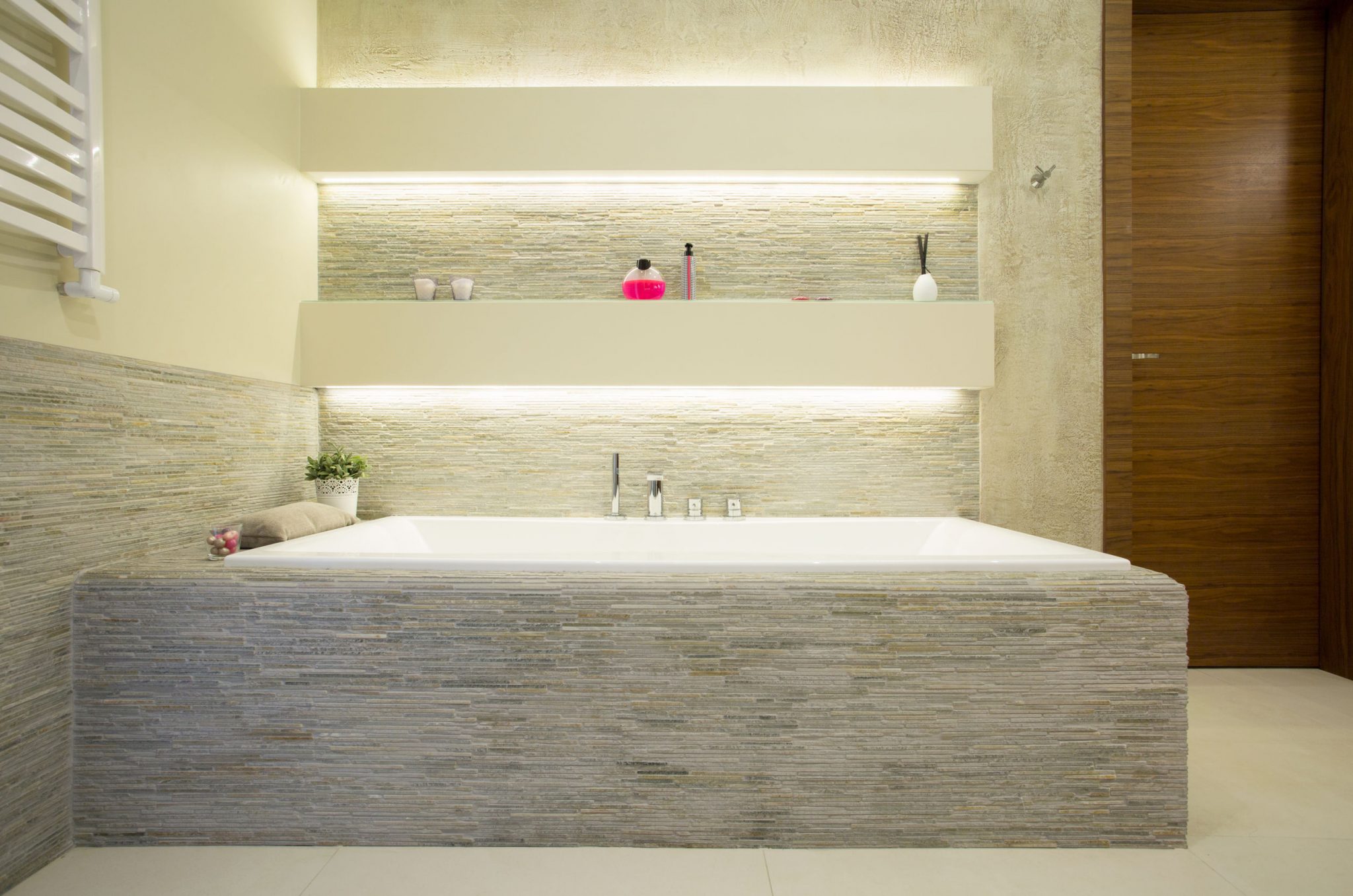 It’s easy to forget just how much great-looking tile can make a bathroom sparkle. One of the elements that can make a bathroom look old and tired is outdated tile. While companies that install one-piece bath and shower combinations say that their solution is the wave of the future, such cost-cutting efforts can be fraught with pitfalls.
It’s easy to forget just how much great-looking tile can make a bathroom sparkle. One of the elements that can make a bathroom look old and tired is outdated tile. While companies that install one-piece bath and shower combinations say that their solution is the wave of the future, such cost-cutting efforts can be fraught with pitfalls.
One of the remedial tips to remember is that placing a one-piece over old tile can actually foster mold growth that may already be trapped between the wall and the old tile and can eventually compromise your wall structure. The best remodeling efforts for old, tired bathrooms involve tearing out the old tile and installing new material. Here are some bathroom tips for selecting the right tile to make your bathing oasis look fresh and inviting.
Good planning is at the base of all bathroom renovations, tile included. Make sure that you know where all elements will be located. Don’t assume that the tile is the size that it says it is. Many larger tiles are also manufactured for the European market and are measured in centimeters, making your measurements slightly off. Measure and then lay tile from the ceiling down to get the best effect from patterns.
Pay attention to the differences between wall and floor tile as the latter have a higher wear rating issued by the National Floorcovering Alliance. Most floor tiles have a rating of 3, 4 or 5, while tall tiles have a rating of 0, 1 or 2. Wall tiles are usually smoother and slicker than those for the floor, which will usually be thicker and often have a rougher surface for traction. Choose floor tiles that are glazed, or ones that can absorb glazes, to make them waterproof. Wall tiles usually have a semi-gloss or matte finish and maybe too porous. Porous wall tiles should not be used in a backsplash or bathtub/shower area.
Three different types of tile are well suited for bathroom renovations: travertine, porcelain and mosaic tiles. Travertine, cut from natural limestone, is elegant and is a good choice for floors and walls in upscale installations. Porcelain is manufactured by firing sand at high temperatures and pressure. It’s available in a wide range of sizes. Choose mosaic tiles, which usually come in smaller sizes, to create a statement and draw attention to an area. Since they easily contour around curves, they are a good choice for showers and drains. Use them sparingly as repeated patterns can be overwhelming.

